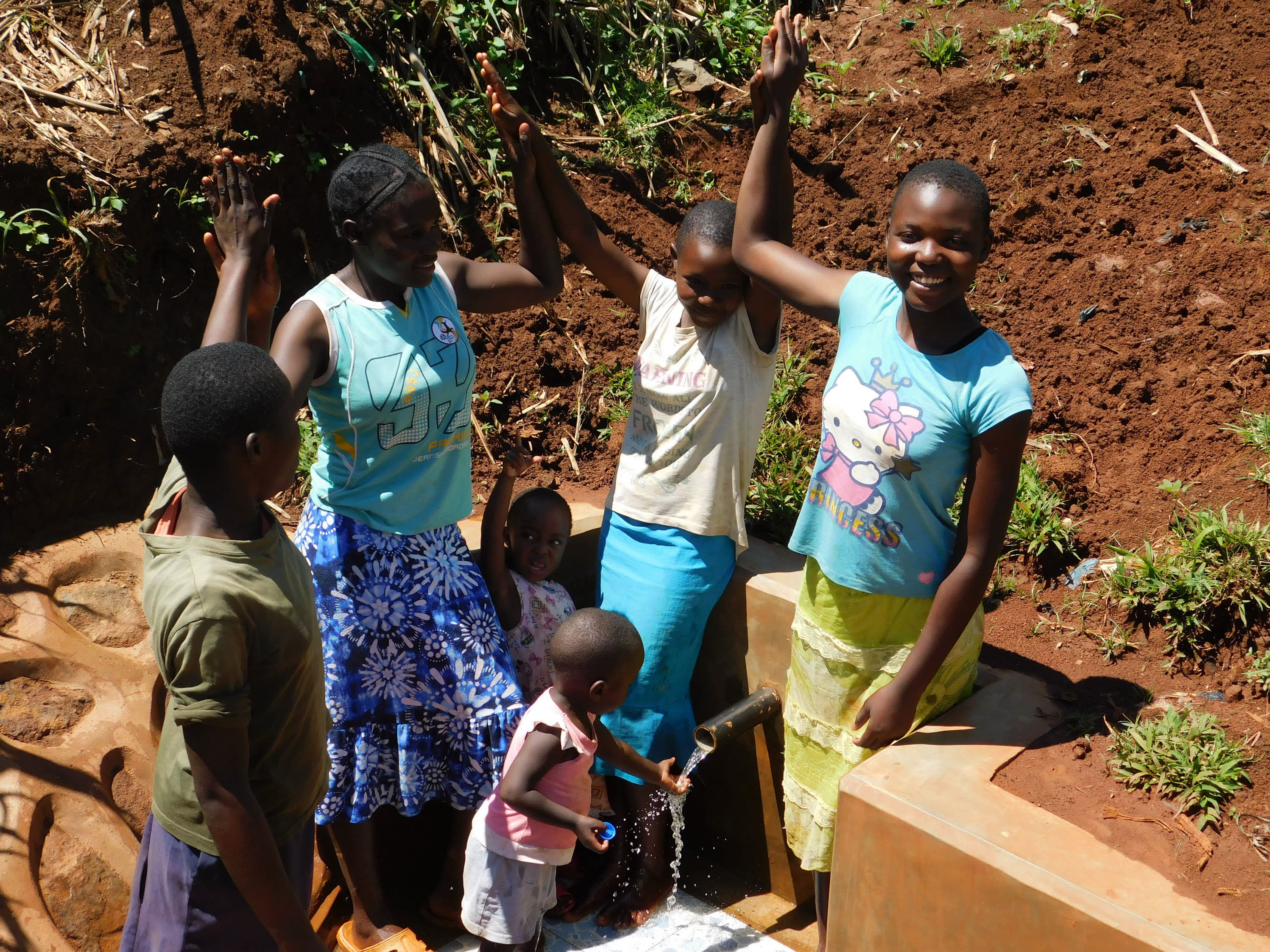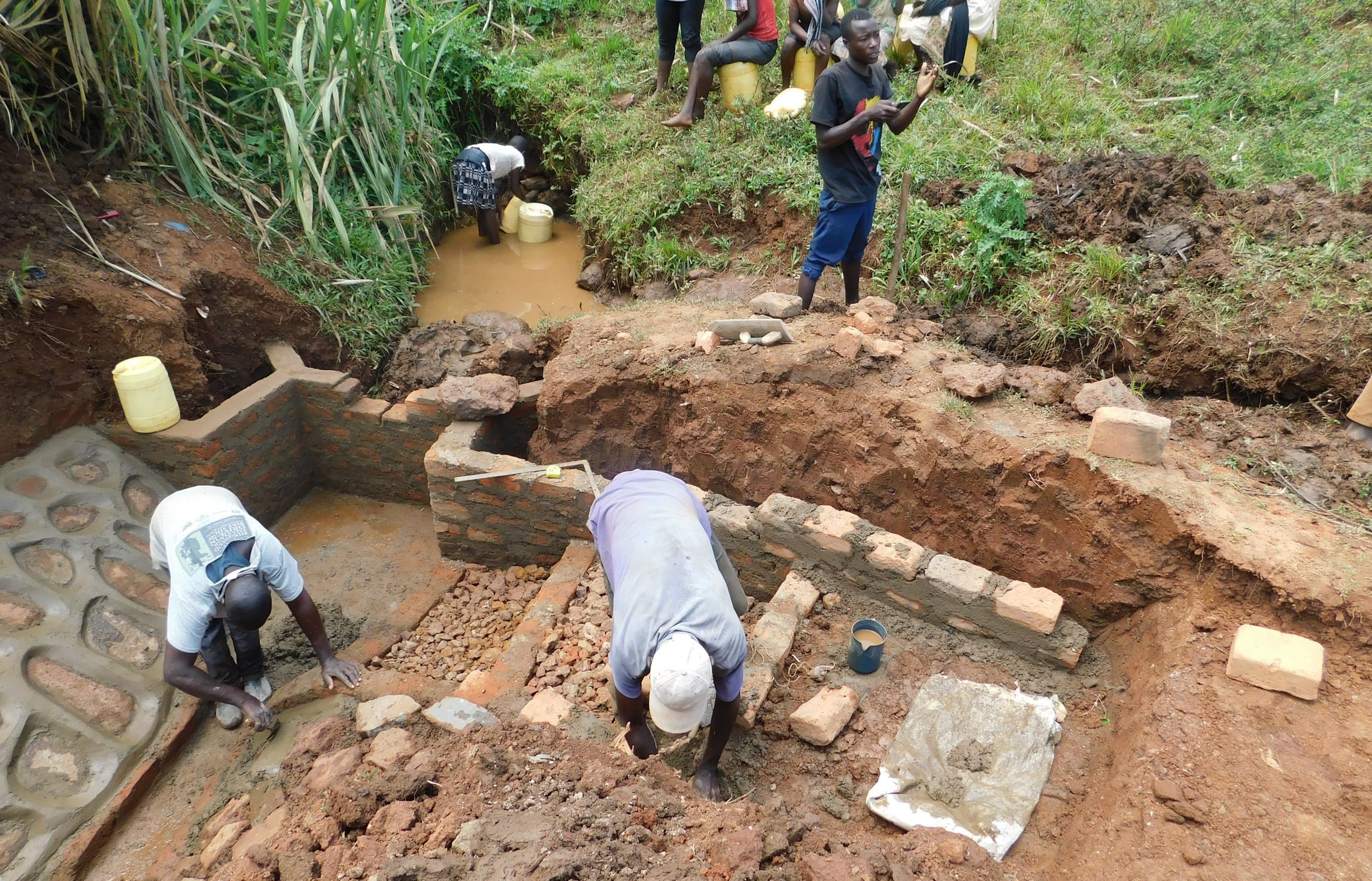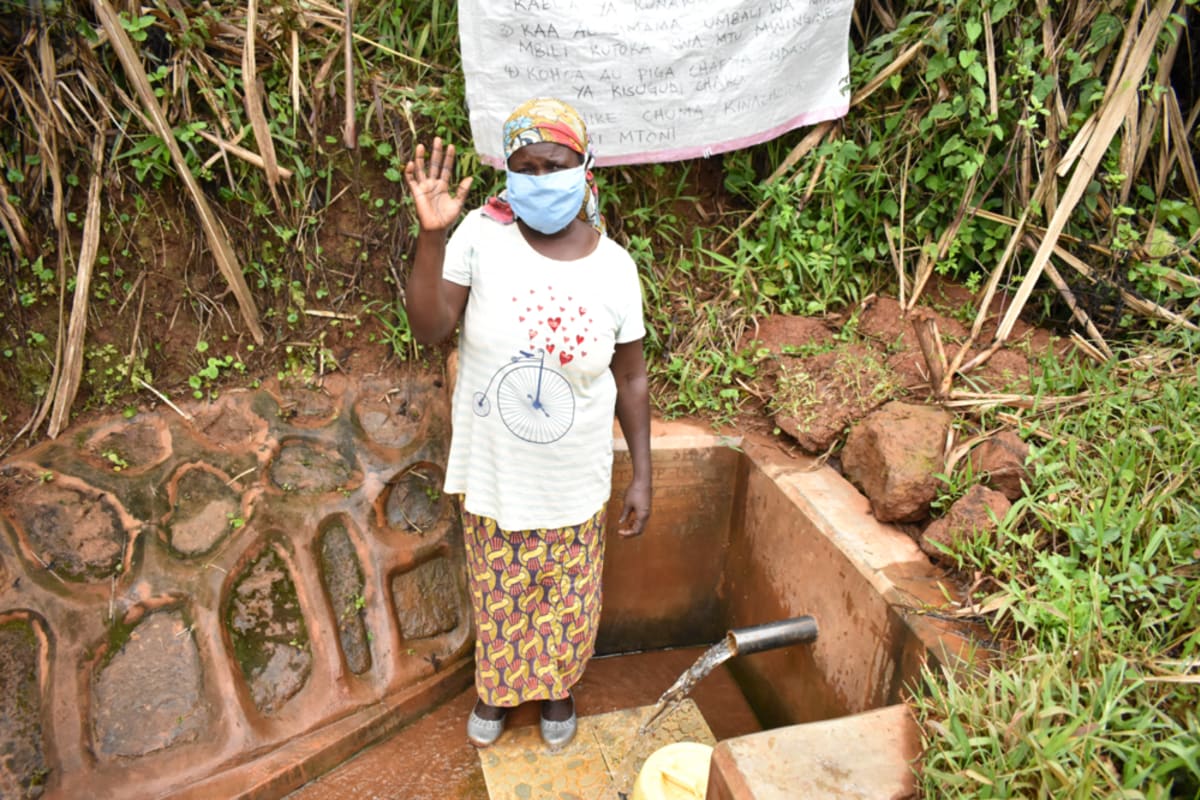An average day in Shisere Community begins at 5:30am when women wake up to do chores and get their children off to school. Morning chores include rushing to the spring to fetch water for drinking and cleaning. Men start by taking care of their domestic animals and later proceed to the farm until afternoon hours when it is too hot to work. The day ends by 8pm when the sun goes down.
People get their water from Francis Atema Spring, which is close to several households. Though the spring is nearby, it's a great struggle to get there after it rains. The ground around the spring gets muddy and slippery.
The water is completely open to contamination and is visibly dirty. The more people who come to fetch water, the more time the next person has to wait for the mud to settle to the bottom again. The community members suffer from water-related diseases after drinking this dirty water and use massive resources to purchase treatment.
"I have for a long period of time suffered in terms of consuming dirty and unsafe water," said Mr. Richard Lijodi.
"Many times I have been diagnosed with typhoid and I have used a lot of resources to cater medication. At last, there is someone who has the interest of people at heart."
What we can do:
"People perish due to lack of information," said Mr. Wendo.
"We are suffering as we do not have adequate information on proper sanitation and hygiene. This has not only rendered our homes unattractive but also majority have reported being sick."
Training
Community members will attend hygiene and sanitation training for at least two days. This training will ensure participants have the knowledge they need about healthy practices and their importance. The facilitator plans to use PHAST (Participatory Hygiene and Sanitation Transformation), CLTS (Community-Led Total Sanitation), ABCD (Asset-Based Community Development), group discussions, handouts, and demonstrations at the spring. One of the most important topics we plan to cover is the handling, storage, and treatment of water. Having a clean water source will be extremely helpful, but it is useless if water gets contaminated by the time it’s consumed.
Training will also result in the formation of a committee that will oversee operations and maintenance at the spring. They will enforce proper behavior around the spring and delegate tasks that will help preserve the site, such as building a fence and digging proper drainage. The fence will keep out destructive animals, and the drainage will keep the area’s mosquito population at a minimum.
Sanitation Platforms
On the final day of training, participants will select five families that should most benefit from new latrine floors.
Training will also inform the community and selected families on what they need to contribute to make this project a success. They must mobilize locally available materials, such as bricks, clean sand, hardcore, and ballast. The five families chosen for sanitation platforms must prepare by sinking a pit for the sanitation platforms to be placed over. All community members must work together to make sure that accommodations and food are always provided for the work teams.
We met a 40-year-old father. He is a married man with three children; two boys and one girl. He does not have a pit latrine in his home. When we learned that he does not have a latrine we became curious to know what the family is using for a toilet. When we visited his home we found out that he had dug an open hole that every member of the family is supposed to use.
We were left concerned about how young children use the pit. The pit is large so there's a danger of falling in, and it's open without walls or any structure to make it private.
This problem will soon come to an end since this father's family has already been chosen as one of the sanitation platform recipients.
Spring Protection
Protecting the spring will ensure that the water is safe, adequate and secure. Construction will keep surface runoff and other contaminants out of the water. With the community’s high involvement in the process, there should be a good sense of responsibility and ownership for the new clean water source.
Fetching water is predominantly a female role, done by both women and young girls. Protecting the spring and offering training and support will, therefore, help empower the female members of the community by giving them more time and efforts to engage and invest in income-generating activities.

 Protected Spring
Protected Spring
 Rehabilitation Project
Rehabilitation Project






































